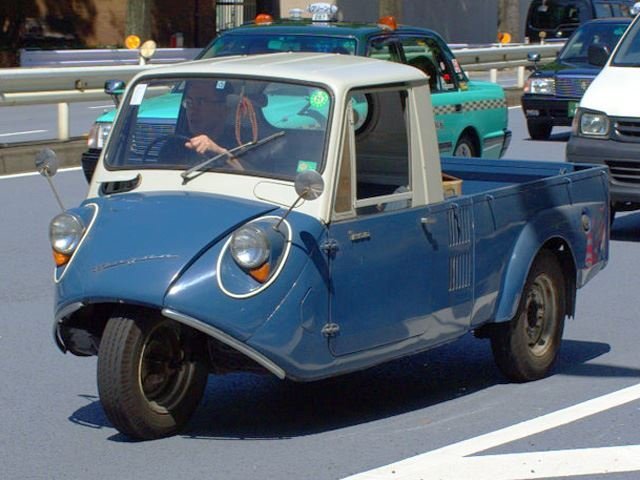Easily the most important vehicle you’ve never heard of, the Mazda K360 sold in huge numbers (for its market) and represents the first steps of taken by Mazda to become part of the then-emerging economic force that is the Japanese automotive industry. It had a very simple design, but so did many automotive milestones. Most important, the K360 was a step in an evolution which would lead to greater things, and not the historical footnote that so many other three-wheelers were.
Japan got off to a relatively slow start in the manufacturing of automobiles. The isolationist policies of the county’s Edo period meant that a feudal society and its accompanying low level of technology and industry lasted for centuries longer than it had in other parts of the world. With the beginning of the Meiji period, Japan underwent staggering modernization at a pace which few countries have ever experienced. But only just after the internal-combustion engine was being invented in Germany, Japan became embroiled in a series of wars, first with China, then Russia and finally both World Wars.
Cars were being built in Japan during this period, but most were either built by foreign companies or were local copies of European or American cars. Military vehicles and trucks had the priority in Japan prior to WWII, although there were vehicles produced for the civilian population as well. These were typified by the 1931 Mazda-Go, basically a three-wheeled motorcycle with a cargo bed in the back. This was both the predecessor to the K360 and what is considered to be the first autorickshaw, a vehicle type still popular in many other, less prosperous parts of Asia.
Following WWII, Japan would finally return to economic prosperity in 1955, with the aim finally being to produce consumer goods. Thus began a period of serious evolution on the part of the Japanese automotive industry. In 1959, Mazda brought out the K360, a similar sort of idea as the prewar Mazda-Go, but more sophisticated. For starters, the passenger compartment was enclosed the way it is on a proper truck. The seats were also regular cars seats, and there were two of them instead of just one.
All of the major mechanical components (excluding those related to steering) were located in the back, under the bed. This included the 11-horsepower 356cc air-cooled V-twin engine. It might not seem like much of a vehicle, but it was just right for the time, and would stay in production until 1969. During its ten year production run, Mazda would sell 280,000 units of the K360, a huge number for such a relatively small market. But the real evidence of the success of the K360 would come in 1960, just a year after its debut. This came in the form of the R360, the first real car produced by Mazda.
Although this was a four-wheeled passenger vehicle, the engine and much of mechanical workings for the rear-engined car had come from the K360. Mazda would grow quickly along with the rest of the Japanese auto industry during the Sixties. In 1967, it would launch the rotary-powered Cosmo halo sports car, this less than a decade after its first car and before the K360 three-wheeler had even finished its production run. It might be an exaggeration to say the K360 was the car that built the modern day Mazda, but it is almost certain that the company wouldn’t have enjoyed such a meteoric rise had the car not been such a success.



